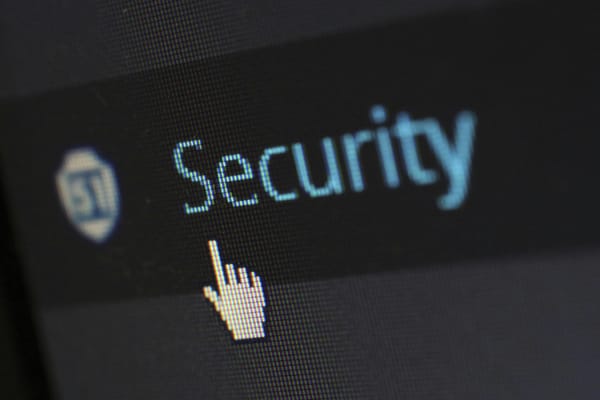The State of Internet Safety Education and Public Health Models Today

The ultimate goal of Security Center, is to one day be able to create a public health model implemented in schools that matters and makes a difference.
As of today, the state of internet safety education in the United States remains fragmented and inconsistent. While many schools address online safety as part of broader technology or health education, there is no standardized, widely implemented curriculum dedicated exclusively to teaching K-12 students how to safely navigate the digital world. In Massachusetts, for instance, the Department of Elementary and Secondary Education provides online safety resources, but these are optional and not tied to a specific class, course, or credit requirement. This lack of standardization means that a child's exposure to internet safety education often depends on the individual priorities of their school district, teachers, or guardians.
There are organizations that have created tools and materials for schools and families. These resources are invaluable but rely heavily on voluntary adoption, leaving significant gaps in coverage and consistency. Moreover, many of these materials target parents or educators, rather than directly addressing children and young adults in a way that feels engaging, relevant, and actionable.
Public Health Models for Internet Safety: What's in Place?
The public health approach to internet safety is still in its infancy. Public health models typically emphasize prevention, early intervention, and community collaboration to address widespread issues. While there are some programs that follow these principles, they are not yet comprehensive or widespread enough to fully meet the challenges young people face online.
For example, some schools partner with local law enforcement or nonprofits to deliver one-time seminars on cyberbullying, sexting, or online predators. While these initiatives are helpful, they often lack follow-up and fail to equip students with practical, ongoing tools they can use in their everyday digital interactions. Similarly, some states have passed legislation requiring internet safety education in schools, but the scope and depth of these programs vary widely.
Suggestions for Moving Forward: Building a Collaborative Solution
To address the gaps in internet safety education, a unified effort is needed. Schools, public health officials, mental health professionals, law enforcement, and families must work together to create a comprehensive, sustainable model. Here’s how we can move forward:
- Develop a Standardized Curriculum Create a mandatory, age-appropriate curriculum for K-12 students that addresses the full spectrum of online safety. Topics should include cyberbullying prevention, privacy protection, recognizing online grooming, and responding to threats like blackmail or hacking. This curriculum should be accessible to schools nationwide and adaptable to local needs.
- Incorporate Public Health Principles Apply a public health approach by emphasizing prevention and equipping children with tools to reduce risks before problems arise. For example, schools could teach students how to identify red flags in online interactions, set up strong passwords, and understand the consequences of oversharing.
- Create Community Collaborations Schools should partner with professionals from multiple fields—psychologists, educators, social workers, and law enforcement officers—to deliver comprehensive education. These experts can provide workshops, classroom sessions, and even one-on-one counseling for students and families dealing with online safety issues.
- Support for High-Risk Populations Focus efforts on high-risk groups, such as children in underserved communities, LGBTQ+ youth, and those with disabilities, who may be disproportionately targeted online. Tailored resources and outreach can ensure that these groups have equal access to education and support.
- Engage Families in the Conversation Internet safety education must extend beyond the classroom. Parents and guardians need tools to have meaningful, productive conversations with their children. Resources such as parent guides, videos, and webinars can help families navigate tricky topics like privacy, social media use, and cyberbullying.
- Expand Access Through Technology Develop interactive online tools and apps that engage students in a format they are familiar with. For example, gamified learning modules could teach kids about online safety while holding their attention.
- Focus on "Cure" and Recovery Resources Provide clear, actionable steps for students who find themselves in unsafe situations, such as being groomed, blackmailed, or hacked. These resources should include legal advice, access to counseling, and direct connections to law enforcement or crisis hotlines.
- School and Public Library Outreach Distribute pamphlets, host seminars, and hold community workshops in schools, libraries, and after-school programs. These efforts should provide tangible, accessible resources for both students and families.
Who Needs to Work Together?
To build a truly effective internet safety model, collaboration across sectors is essential. Key stakeholders include:
- Schools and Educators: Integrating internet safety into the core curriculum.
- Mental Health Professionals: Addressing the psychological impact of online threats and teaching resilience.
- Law Enforcement: Offering expertise on cybercrime prevention and response.
- Public Health Officials: Leading the charge on prevention models and community outreach.
- Parents and Guardians: Acting as partners in reinforcing safety principles at home.
- Nonprofit Organizations: Providing specialized resources and advocacy.
By bringing together these voices and leveraging their expertise, we can create a comprehensive, practical approach to internet safety—one that equips young people not just to survive in the digital age, but to thrive.
.




